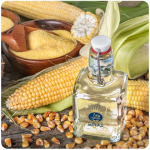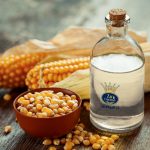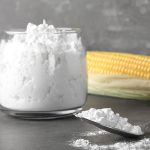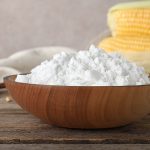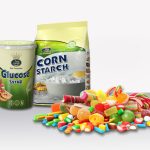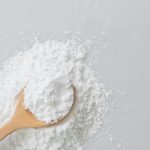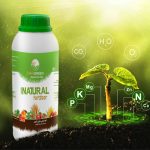products categorization
Glucose
Raw starch
Modified starch
Household consumption
Medicine
Pharmaceutical maltodextrin
Maltodextrin is a mixture of polysaccharides and oligosaccharides whose DE is less than 20. Maltodextrin has properties such as solubility in cold water, low viscosity, and low and negligible sweetness, and is used as a creator of suitable physical properties in a wide range of food and pharmaceutical products. Maltodextrin is used in different pharmaceutical industries due to its low viscosity, high dry matter, good solubility in water, good mouthfeel, gelling properties, and emulsion stabilization.
common excipient in tablets
Preparation of edible films
Facilitating the direct compression of active drugs that are difficult to compress
Prebiotic function
Microencapsulation
Formulation of energy drinks, supplements, and sports powders

Description
The use of maltodextrin as a probiotic substance
Probiotic bacteria are bacteria that help maintain the balance of intestinal microbial flora and prevent the growth of harmful bacteria. Probiotics affect the balance of beneficial and harmful bacteria in the gut and change this balance in favor of increasing the population of beneficial bacteria. Probiotics are indigestible carbohydrates that are necessary to stimulate the growth of probiotic bacteria in the body. These components provide a suitable environment selectively for probiotic bacteria in the body so that they can have the best growth and development in it, and thus exert their positive effects on the host. Maltodextrin as a prebiotic substance stimulates the growth of probiotic bacteria. Also, in the spray drying of some types of bacteria such as bifidobacterium, the use of maltodextrin while protecting the bacteria against temperature stress, combines the two effects of probiotic and prebiotic (synbiotic).
Use of maltodextrin in microencapsulation
Microencapsulation is a technology in which target compounds are covered by a wall to form microcapsule particles. These capsules can release their contents at a controlled or defined speed in certain conditions. In this technique, all kinds of flavors, essential oils, oils, enzymes, microorganisms, etc. can be covered by biopolymer compounds such as carbohydrates, proteins, and fats. Microencapsulation is a physicochemical or mechanical operation to enclose a component in a coating and produce particles with a very small size, and mainly a hydrophobic core is protected by a hydrophilic wall. Maltodextrin is one of the most common carbohydrates used in the encapsulation process and so far it has been used in the encapsulation of various compounds such as vitamin C, carotenoids, antibiotics, and fat-soluble vitamins. Usually, maltodextrin is used together with gum arabic or emulsifiers in the encapsulation process.
The use of maltodextrin in sports powders
Maltodextrin plays an important role in strengthening muscles for intense sports training and restoring the lost glycogen level, and the consumption of this substance causes glycogen to start rebuilding immediately after training. Since maltodextrin originates from starch, it is easily and quickly converted into glucose and absorbed, the produced glucose is used for restoring glycogen. Maltodextrin can also be consumed in the majority of drinks before the start of training and provides more energy for training. If maltodextrin is to be used post-workout, it should be mixed with protein powders to increase muscle growth and recovery time. Maltodextrin can be consumed in recovery powders before and after training with protein.
Maltodextrine Specification | ||
Test | Acceptance Criteria | |
| Physical | ||
| Description | White Powder, Odorless, non-sweet | |
| Chemical | ||
| Assay (Dextrose Equivalent) | NMT 20 | |
| Impurities | Residue on Ignition (%) | NMT 0.5 |
| Limit of protein (%) | NMT 0.1 | |
| Limit of Sulphur dioxide (ppm) | NMT 20 | |
| pH | 4.0-7.0 | |
| Loss on drying (%) | NMT 6.0 | |
| Microbiological | ||
Total Aerobic Microbiological Count (cfu/g) (TAMC) | NMT 10 3 | |
Total Combined Yeasts/Molds Count (cfu/g) (TYMC) | NMT 10 2 | |
| Salmonella | Absence | |
| Escherichia Coli | Absence | |
